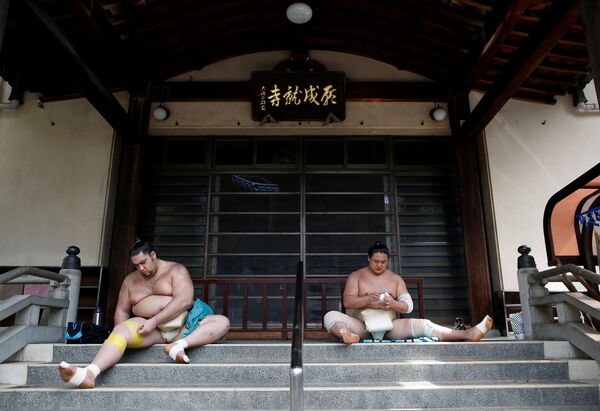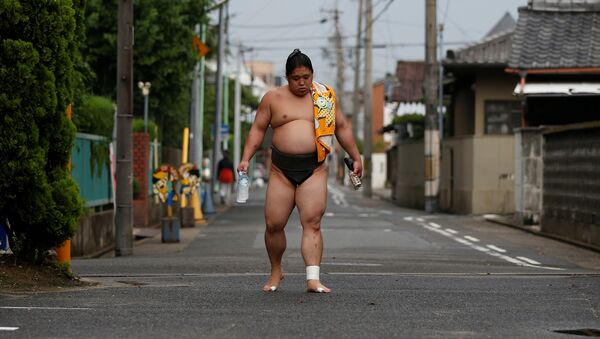Life as a sumo wrestler is highly disciplined, with rules regulated by the Japan Sumo Association.
Most sumo wrestlers or rikishis are required to live in communal sumo training zones, known in Japanese as heya, where all aspects of their daily lives are dictated by strict tradition.
Sumo wrestlers consume up to 20,000 calories per day and often allow themselves a drink or two. Their usual weight exceeds 200 kilograms and on average they live up to 65 years.
Their daily life is as unusual as the sport to which they dedicated it. Sumo goes beyond athletics: it’s a show that includes a religious aspect, traditions and samurai rituals.

As a rule, most rikishis live and train together with their teammates and tradition binds them to even small aspects of daily life such as eating a meal.
During dinner time the experienced wrestlers sit down first and only when they finish their meal, their younger colleagues can take their seats.
The younger wrestlers are also responsible for fulfilling most of the household duties.

The day for a rikishi usually begins at 5 a.m. with grueling training and sparring. The focus is on strength exercises and stretching. By noon the training is over and it's time for lunch.
The basis of the wrestler’s diet is chankonabe – a special soup that consists of noodles and a variety of ingredients rich in protein: chicken, fish, beef and tofu.

Wrestlers can have some alcohol, in particular beer, since alcoholic beverages are also high in calories and the average daily diet includes 5,000-8,000 calories. In some cases this figure can increase by two or three times.
Many beginner sumo wrestlers have a tough life because they barely have enough money to make ends meet; however leading wrestlers earn a little less than half a million dollars a year.
Sumo enjoys huge popularity in Japan where rikishis are seen as propagators of samurai traditions.
In the code of conduct of a fighter, the key place is occupied by the concept of "hinkaku" – dignity. Any unworthy act will adversely affect the reputation of a fighter and may prevent him from becoming “yokozuna,” the highest rank or the great champion.
Hence, no matter what happens during a fight, a sumo wrestler must remain unperturbed regardless of the outcome. During the days of major competitions, some wrestlers actually live in temples.
Although more and more foreigners are getting involved in Sumo lately, professional competitions are held only in Japan. In the Land of the Rising Sun, sumo is more than just a sport.
According to a legend, Sumo’s first fight took place more than 2,500 years ago and in it the Shinto gods Takemikazuki and Takeminakata came together in a struggle for power over the country.
Takemikazuki was victorious and it is apparently from him that the Japanese emperors have led their ancestral race.


